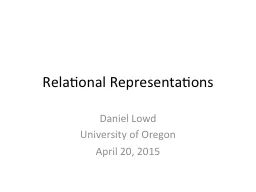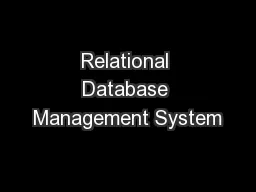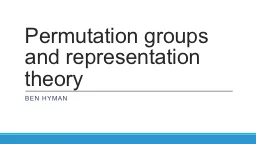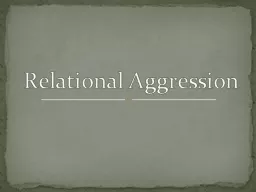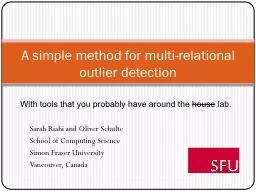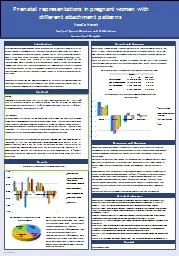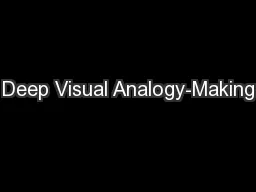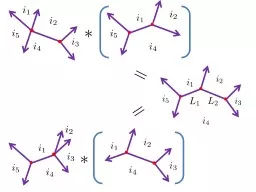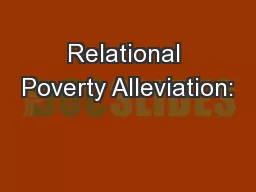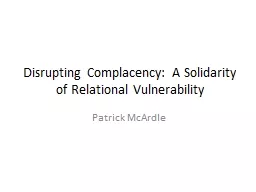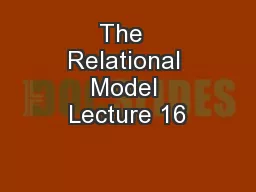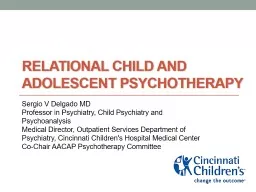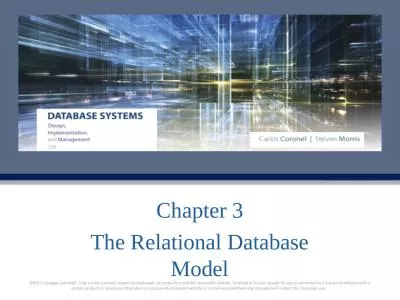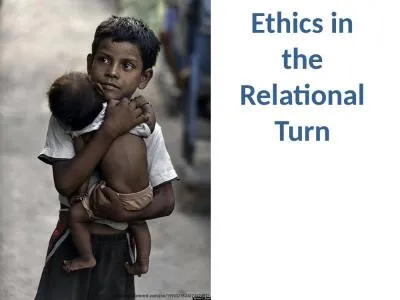PPT-Relational Representations
Author : kittie-lecroy | Published Date : 2016-07-02
Daniel Lowd University of Oregon April 20 2015 Caveats The purpose of this talk is to inspire meaningful discussion I may be completely wrong My background Markov
Presentation Embed Code
Download Presentation
Download Presentation The PPT/PDF document "Relational Representations" is the property of its rightful owner. Permission is granted to download and print the materials on this website for personal, non-commercial use only, and to display it on your personal computer provided you do not modify the materials and that you retain all copyright notices contained in the materials. By downloading content from our website, you accept the terms of this agreement.
Relational Representations: Transcript
Download Rules Of Document
"Relational Representations"The content belongs to its owner. You may download and print it for personal use, without modification, and keep all copyright notices. By downloading, you agree to these terms.
Related Documents

